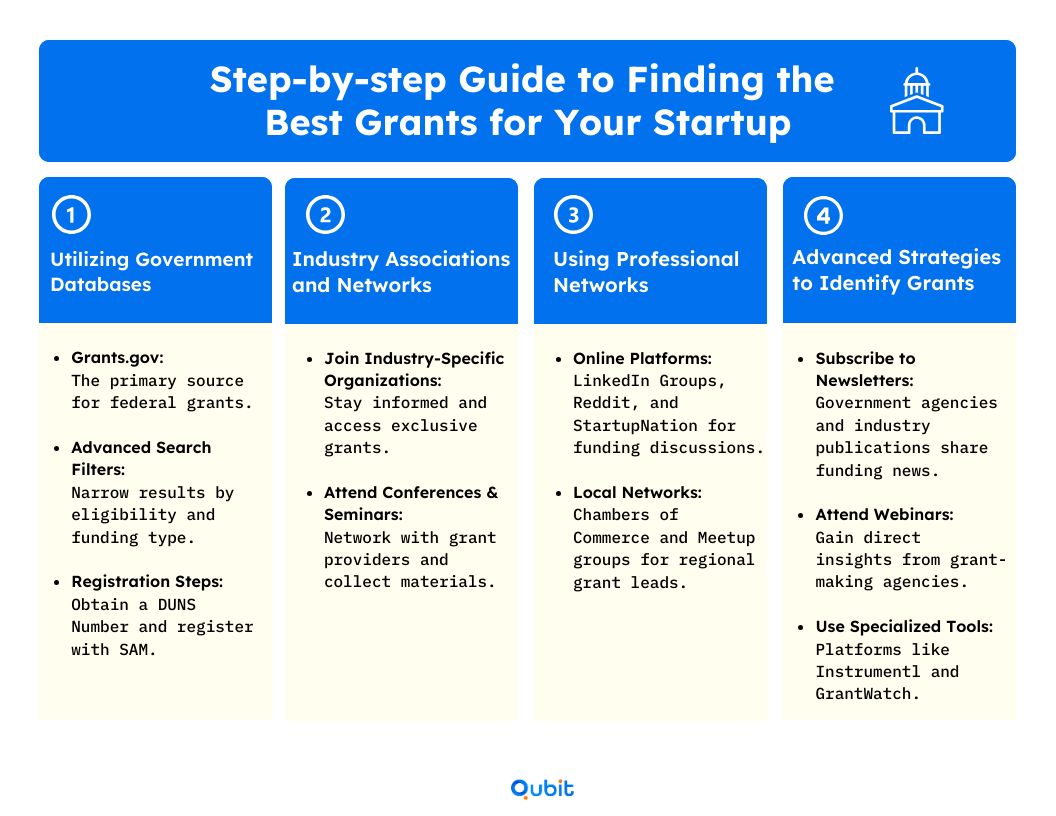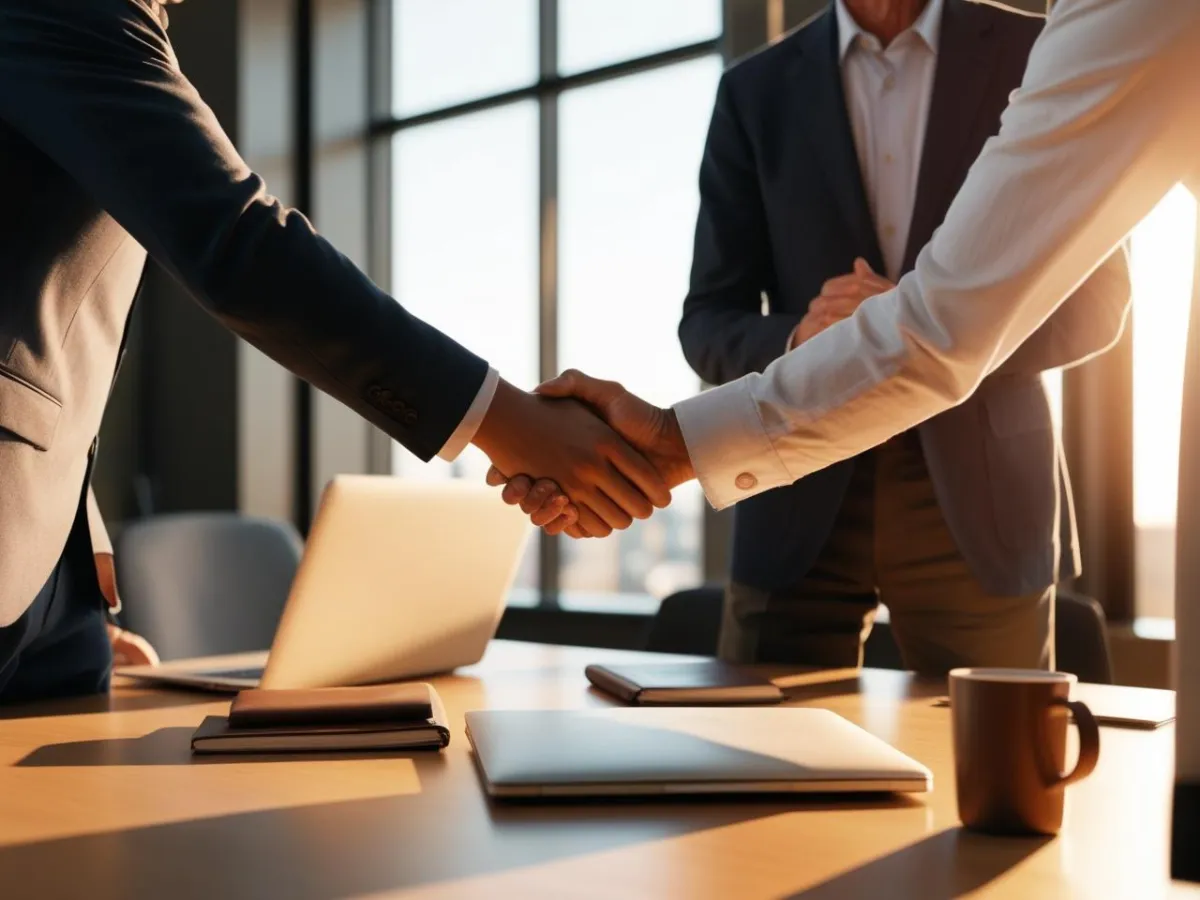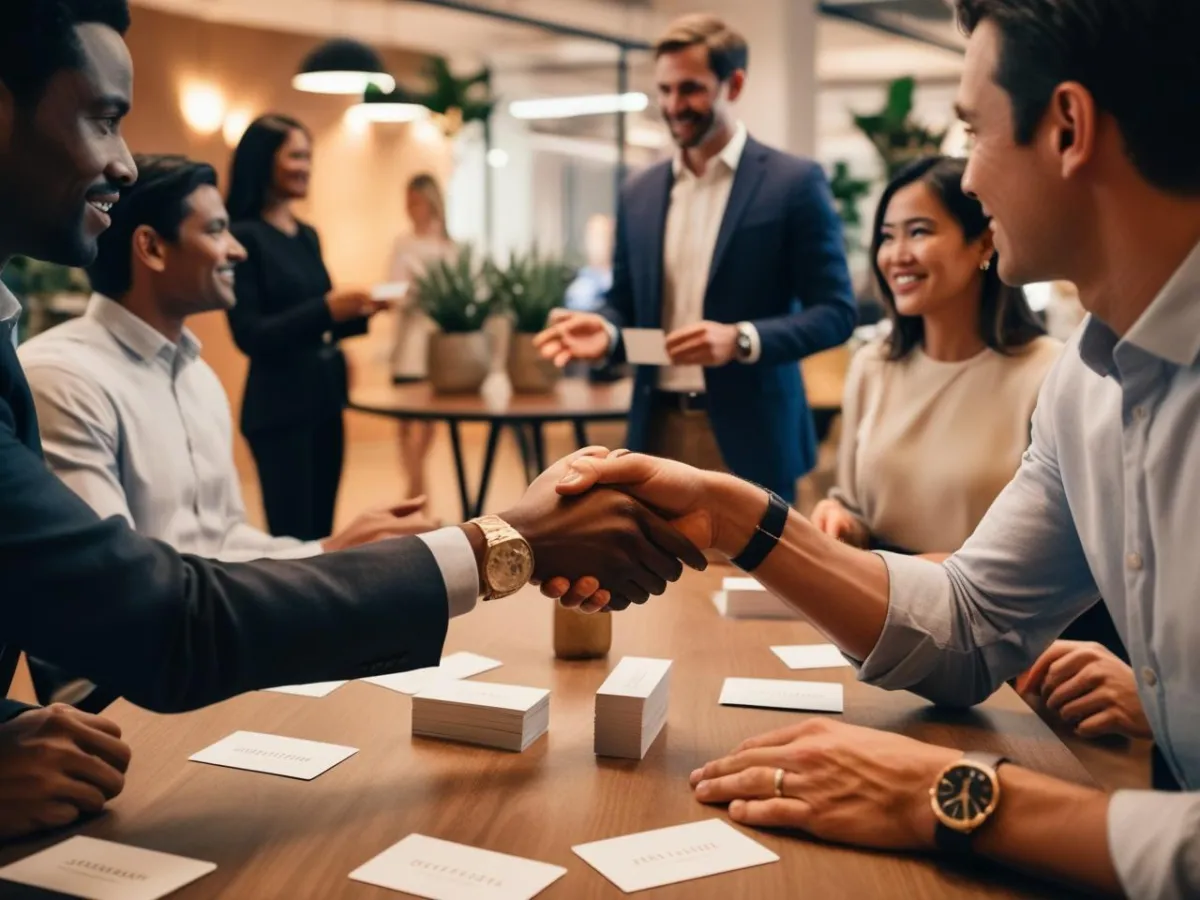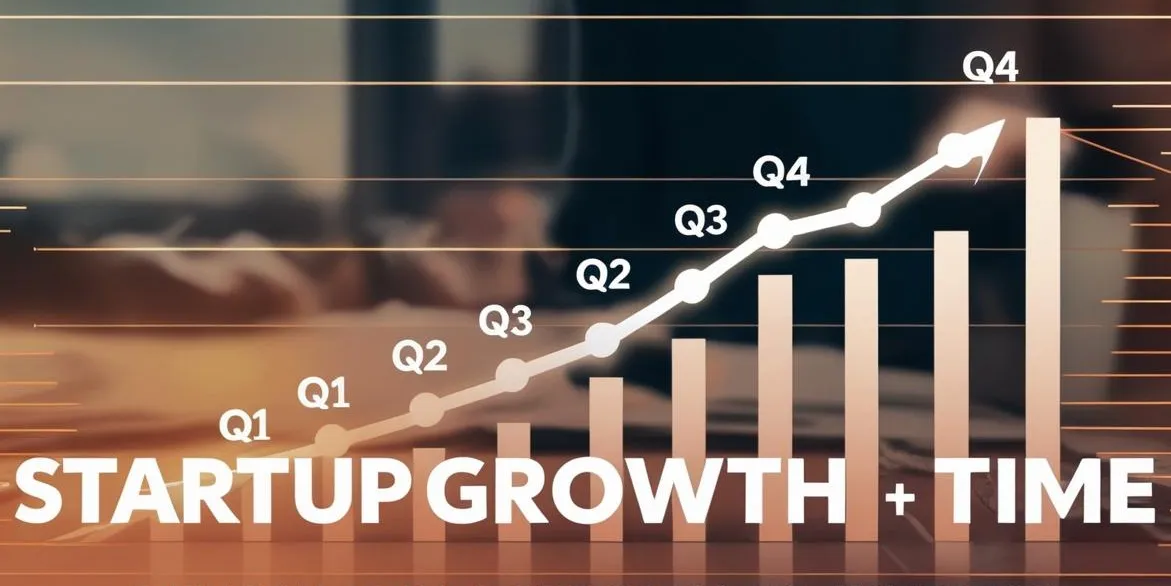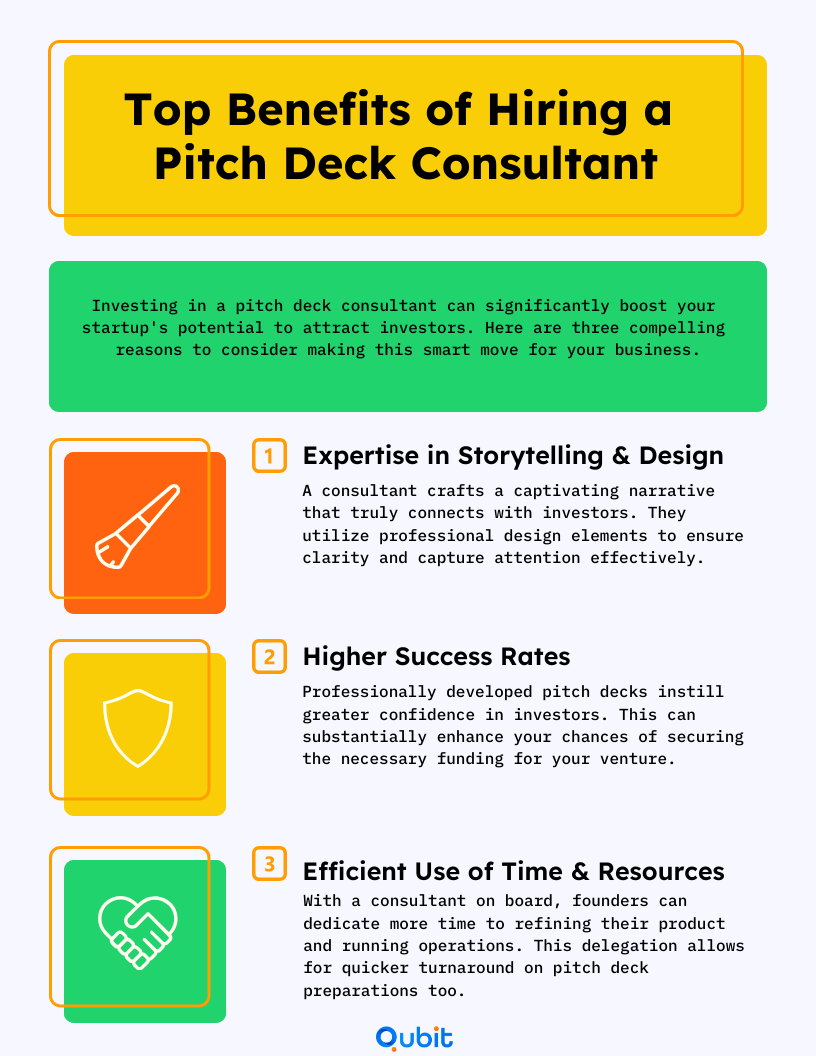A well-designed pitch deck not only captures attention but also conveys your vision and effectively demonstrates your business’s potential.
Yet, crafting such a presentation can be challenging. Entrepreneurs often face difficulties with visual storytelling, design aesthetics, and effectively showcasing their venture’s value proposition.
But don’t worry! We’ve compiled a comprehensive guide to the best pitch deck software and tools available in 2024.
This article explores detailed reviews, features, pricing, and expert tips to help you choose the right pitch deck creator. Whether you’re a startup founder or a business professional, these tools will create compelling presentations that captivate investors.

If you want to understand the fundamentals first, check out the essential elements of a winning pitch deck to ensure your presentation hits all the right notes.
Why is a Pitch Deck Important
A pitch deck is more than just a slideshow; it’s a powerful tool that encapsulates your business story, value proposition, and growth potential.
It’s often the first impression investors have of your startup, making it important to get it right. An effective pitch deck can set you apart from others and pave the way for successful funding rounds.
Creating an engaging pitch deck requires a blend of strategic content and attractive visuals. It’s not just about presenting facts but about telling a story that resonates with investors.
Understanding investor psychology is key to crafting a narrative that connects emotionally with your audience. Learn more about data-driven storytelling techniques to improve your pitch.
For a detailed guide on creating effective presentations, explore the essential elements of a winning pitch deck.
What Are the Best Tools for Creating Pitch Decks?

Choosing the right software significantly enhances the quality and effectiveness of your pitch deck. Here’s a curated list of the top pitch deck tools that cater to various needs:
- Visme
- Prezent.ai
- Shorthand
- Canva
- Pitch
- Microsoft PowerPoint
- Keynote
- Storydoc
- Beautiful.ai
- BaseTemplates Pro
- Decktopus
These tools offer a range of features from AI-powered content suggestions to interactive storytelling capabilities. Discover how each of these tools can enhance your presentations in our detailed reviews below.
For additional software options and design platforms, explore our guide on the best software platforms for designing your pitch deck.
Comprehensive Reviews of Best Pitch Deck Software and Tools
Here’s an in-depth analysis of each tool, highlighting their features, pros and cons, pricing, and ideal use cases.
Visme
Overview and Key Features
Visme is an all-in-one pitch deck maker that combines intuitive design with powerful features. It offers:
- Extensive Template Library: Access to thousands of customizable templates tailored for various industries.
- Interactive Elements: Incorporate animations, links, and embedded media to boost engagement.
- Data Visualization: Create stunning charts, graphs, and infographics to present your data compellingly.
- Collaboration Tools: Enable team members to collaborate in real-time with commenting and version history.
- Branding Features: Maintain brand consistency with custom fonts, colors, and logos.
Pros and Cons
Pros:
- User-Friendly Interface: Ideal for beginners without design experience.
- Extensive Customization: Allows for creative flexibility to match your brand’s identity.
- Interactive Content: Engages audiences through multimedia elements.
- Robust Support: Offers tutorials, webinars, and customer support.
Cons:
- Limited Free Version: Advanced features require a paid subscription.
- Learning Curve for Advanced Features: Some complex functionalities may take time to master.
Pricing
Visme offers a tiered pricing model:
- Basic Plan: Free, with limited features and access to basic templates.
- Personal Plan: Starting at $15/month, unlocks more assets and storage.
- Business Plan: $29/month, includes team collaboration and advanced analytics.
- Enterprise Plan: Custom pricing for larger organizations requiring additional features.
Ideal Use Cases
Visme is suitable for startups seeking a balance between ease of use and design sophistication. It’s perfect for creating visually engaging presentations that require multimedia elements. Whether you’re pitching to investors or presenting to stakeholders, Visme can elevate your content.
For more on enhancing your design, check out top graphic design resources.
Prezent.ai
Overview and Key Features
Prezent.ai leverages artificial intelligence to automate the creation of pitch decks. Key features include:
- AI-Driven Content Suggestions: Provides intelligent recommendations for slides and content structure.
- Smart Formatting: Automatically adjusts design elements for consistency and aesthetics.
- Real-Time Collaboration: Enables teams to work together seamlessly, no matter where they are.
- Customizable Templates: Offers industry-specific templates tailored to various presentations.
- Analytics Integration: Tracks engagement metrics to refine and improve your decks.
Pros and Cons
Pros:
- Time-Efficient: Speeds up the creation process with AI automation.
- Brand Consistency: Ensures all presentations align with your brand guidelines.
- Collaboration-Friendly: Facilitates teamwork with shared workspaces and commenting.
- Insightful Analytics: Provides data on how viewers interact with your presentations.
Cons:
- Less Creative Control: Some users may find the AI suggestions limiting.
- Higher Pricing for Small Startups: Custom pricing may be expensive for smaller teams.
Pricing
Prezent.ai offers custom pricing plans based on organizational needs. Contact their sales team for detailed information and to find a plan that suits your requirements.
Ideal Use Cases
Best suited for businesses looking to streamline the presentation creation process with AI assistance, especially when working with large teams. It’s particularly beneficial for organizations that produce a high volume of presentations and need to maintain consistency.
Discover how to use AI in your presentations by exploring data-driven storytelling techniques.
Shorthand
Overview and Key Features
Shorthand is a platform designed for creating immersive and interactive stories. Features include:
- Scroll-Based Animations: Engage viewers with dynamic content as they navigate your presentation.
- Multimedia Integration: Easily incorporate images, videos, and audio without technical expertise.
- No Coding Required: Build complex designs with a simple drag-and-drop interface.
- Responsive Design: Ensure your presentation looks great on all devices.
- Collaboration Features: Work with your team in real-time to create compelling narratives.
Pros and Cons
Pros:
- Highly Engaging: Creates unique presentations that stand out.
- Enhances Storytelling: Ideal for narratives that require a deeper level of engagement.
- User-Friendly for Non-Developers: No technical skills needed to create professional designs.
Cons:
- Not Suitable for Traditional Decks: May not fit standard slide-based presentation formats.
- Premium Pricing: Can be costly for startups with limited budgets.
Pricing
Shorthand offers:
- Standard Plan: $99/month, suitable for individuals and small teams.
- Enterprise Plan: Custom pricing with additional features and support.
Ideal Use Cases
Perfect for startups that want to tell a compelling story through an interactive pitch deck, especially in creative industries like media, marketing, and design. It’s also great for companies seeking to differentiate themselves through unique presentations.
Canva
Overview and Key Features
Canva is a versatile design tool popular for its ease of use and extensive template library. Key features include:
- Thousands of Templates: Covers a wide range of industries and styles.
- Drag-and-Drop Interface: Simplifies the design process for users of all skill levels.
- Collaborative Features: Allows team members to edit and comment in real-time.
- Stock Photo Library: Access to millions of images, icons, and graphics.
- Brand Kit: Maintain brand consistency with custom fonts, colors, and logos.
Pros and Cons
Pros:
- Extremely User-Friendly: Ideal for non-designers.
- Free Plan Availability: Access to a variety of features without cost.
- Wide Range of Visual Assets: Enhances creativity and customization.
- Cross-Platform Accessibility: Available on web and mobile devices.
Cons:
- Limited Advanced Features: May not satisfy professional designers seeking complex capabilities.
- Premium Elements Require Payment: Some assets are only available in the Pro plan.
Pricing
- Free Plan: Access to basic features and templates.
- Pro Plan: $12.95/month, includes advanced features, premium assets, and unlimited storage.
- Enterprise Plan: Custom pricing, offers additional administrative controls and support.
Ideal Use Cases
Ideal for startups and individuals who need to create professional-looking pitch decks quickly without extensive design experience. Canva is perfect for crafting visually appealing presentations on a budget.
Pitch
Overview and Key Features
Pitch is a modern presentation software that combines design, collaboration, and analytics. Features include:
- Collaborative Workspace: Teams can co-create presentations with real-time editing.
- Modern Templates: Offers sleek designs with a contemporary aesthetic.
- Audience Analytics: Provides insights into how viewers interact with your deck.
- Integrations: Connects with tools like Slack, Google Sheets, and Notion.
- Version Control: Keep track of changes and revert to previous versions if needed.
Pros and Cons
Pros:
- Facilitates Team Collaboration: Important for distributed teams.
- Engaging Designs: Helps presentations stand out with modern visuals.
- Insights into Viewer Engagement: Informs improvements based on data.
- Regular Updates: Continuous addition of new features and templates.
Cons:
- Limited Offline Access: Primarily cloud-based.
- Smaller Template Library: Fewer options compared to some competitors.
Pricing
- Starter Plan: Free, with basic features suitable for individuals.
- Pro Plan: $10/month per user, unlocks advanced features and analytics.
- Enterprise Plan: Custom pricing with enhanced security and support.
Ideal Use Cases
Great for startups that work collaboratively on presentations and value audience engagement analytics. Pitch is ideal for teams that prioritize modern design and seamless teamwork.
Microsoft PowerPoint
Overview and Key Features
Microsoft PowerPoint is a classic choice offering:
- Extensive Customization: Full control over slide layouts and design elements.
- Wide Array of Templates: Access to numerous templates for various purposes.
- Multimedia Support: Embed videos, audio, and animations.
- Familiar Interface: Most users have some experience with PowerPoint.
- Integration with Office Suite: Seamless use with Word, Excel, and Outlook.
Pros and Cons
Pros:
- Highly Customizable: Great for detailed and complex presentations.
- Widely Used and Accepted: Easy to share and present across platforms.
- Offline Access: Work without internet connectivity.
- Robust Features: Advanced tools for animations, transitions, and more.
Cons:
- Steeper Learning Curve: Advanced features require time to learn.
- Less Collaborative: Real-time collaboration is not as smooth as cloud-based tools.
- Design Limitations: Can result in generic-looking presentations if not designed carefully.
Pricing
Available through Microsoft 365 subscriptions:
- Personal Plan: $6.99/month, includes access for one user.
- Family Plan: $9.99/month, up to six users.
- Business Plans: Starting at $5/user/month, include additional business apps.
Ideal Use Cases
Suitable for users who prefer traditional software with robust features and need offline access. PowerPoint is ideal for complex presentations requiring intricate customizations.
Keynote
Overview and Key Features
Keynote is Apple’s presentation software with features like:
- High-Quality Templates: Professionally designed templates for polished presentations.
- Smooth Animations and Transitions: Create cinematic effects easily.
- Integration with iOS and macOS Devices: Syncs across devices for seamless access.
- Collaboration through iCloud: Work with others in real-time.
- Easy Media Insertion: Drag and drop photos, videos, and music.
Pros and Cons
Pros:
- Intuitive Interface for Mac Users: Designed with Apple’s user-friendly philosophy.
- Visually Impressive Presentations: Stand out with high-quality graphics.
- Free for Apple Device Owners: No additional cost for macOS or iOS users.
- Strong Performance: Optimized for Apple hardware.
Cons:
- Limited Compatibility: Not as accessible for Windows users.
- Fewer Templates: Smaller selection compared to some competitors.
- Learning Curve for Non-Apple Users: May be unfamiliar to those new to the ecosystem.
Pricing
- Free for macOS and iOS users.
Ideal Use Cases
Best for individuals and teams working within the Apple ecosystem who desire polished presentations with minimal effort. Keynote is ideal for those who value design aesthetics and seamless device integration.
Storydoc
Overview and Key Features
Storydoc specializes in interactive and personalized presentations. Features include:
- Interactive Content Blocks: Engage viewers with quizzes, forms, and multimedia.
- Personalization Tokens: Customize content for different viewers automatically.
- Engagement Analytics: Track how your audience interacts with each element.
- CRM Integration: Syncs with tools like Salesforce for personalized outreach.
- Dynamic Storytelling: Create a narrative flow that adapts to viewer interactions.
Pros and Cons
Pros:
- Enhances Engagement: Keeps investors interested with interactive features.
- Personalized Experiences: Tailor presentations to individual stakeholders.
- Insightful Analytics: Gain deep insights into viewer behavior.
- Professional Support: Offers assistance in crafting effective presentations.
Cons:
- Learning Curve: Interactive features may require time to master.
- Higher Pricing: May be costly for small startups.
Pricing
- Professional Plan: Starting at $400/month.
- Enterprise Plan: Custom pricing with additional features and support.
Ideal Use Cases
Ideal for startups wanting to deliver personalized pitches and closely track investor engagement. Storydoc is perfect for sales teams and entrepreneurs who want to stand out with innovative presentations.
Beautiful.ai
Overview and Key Features
Beautiful.ai focuses on smart templates that adjust as you add content. Features include:
- AI-Powered Design Adjustments: Automatically reformats slides for optimal design.
- Extensive Smart Slide Library: Pre-built templates for various content types.
- Brand Control Settings: Enforce brand guidelines across presentations.
- Collaboration Options: Work with team members seamlessly.
- Presentation Analytics: Monitor how your presentations are being used.
Pros and Cons
Pros:
- Simplifies Design Choices: Eliminates the need for manual formatting.
- Maintains Consistency: Ensures a cohesive look and feel throughout.
- Time-Saving: Speeds up the creation process significantly.
- User-Friendly: Minimal learning curve for new users.
Cons:
- Limited Creative Control: Less flexibility for custom designs.
- Internet Required: Needs connectivity to access features.
Pricing
- Pro Plan: $12/month billed annually, full access to features.
- Team Plan: $40/month per user billed annually, includes team collaboration tools.
- Enterprise Plan: Custom pricing for larger organizations.
Ideal Use Cases
Great for users who want to create beautiful presentations quickly without worrying about design layouts. It’s ideal for sales pitches, internal communications, and any scenario where time is of the essence.
BaseTemplates Pro
Overview and Key Features
BaseTemplates Pro offers industry-specific templates and tools. Features include:
- Investor-Ready Templates: Designed based on successful pitch decks.
- Content Guidance: Provides tips on what to include in each slide.
- Integrated Resources: Offers financial models and business plan templates.
- Compatibility: Works with PowerPoint, Keynote, and Google Slides.
- One-Time Purchase: No recurring subscription fees.
Pros and Cons
Pros:
- Time-Saving: Jumpstart your deck with ready-to-use templates.
- Content Suggestions: Enhances messaging with expert guidance.
- Affordable Pricing: One-time fee for full access.
- Versatile Use: Can be used across different presentation software.
Cons:
- Limited Customization: Templates may require adjustments to fit unique branding.
- Requires Separate Software: Need another program to edit and present.
Pricing
- One-Time Fee: $99 for full access to all templates and resources.
Ideal Use Cases
Ideal for startups wanting a quick start with industry-standard templates. It’s perfect for founders who need guidance on content and structure without investing in ongoing subscriptions.
Decktopus
Overview and Key Features
Decktopus is an AI-powered presentation builder that simplifies content creation. Features include:
- AI-Generated Content Suggestions: Helps overcome writer’s block with ideas.
- Adjustable Layouts and Themes: Customize designs with ease.
- Interactive Elements: Embed forms, quizzes, and feedback sections.
- Cloud-Based Access: Work from anywhere without software installation.
- Fast Creation Process: Create a professional deck in minutes.
Pros and Cons
Pros:
- Accelerates Creation: Ideal for tight deadlines.
- Easy to Use: Minimal learning curve, suitable for all skill levels.
- Interactive Features: Increase engagement with your audience.
- Affordable Pricing: Budget-friendly options.
Cons:
- Limited Design Customization: May not satisfy advanced design needs.
- Branding on Free Version: Decktopus branding remains unless you upgrade.
Pricing
- Free Plan: Basic features with Decktopus branding on presentations.
- Pro Plan: $4.99/month, unlocks full features and removes branding.
- Business Plan: $14.99/month, includes team collaboration and advanced features.
Ideal Use Cases
Suitable for users needing to create interactive presentations quickly without extensive design skills. Ideal for startup pitches, educational purposes, and sales presentations.
Categorization of Tools
To help you choose the right pitch deck software, we’ve categorized the tools based on their primary focus.
Design-Focused Tools
- Visme
- Canva
- Beautiful.ai
These tools emphasize aesthetics and visual appeal, perfect for startups wanting to create stunning presentations without hiring a designer.
Enhance your design skills further with our guide on visual design principles for pitch decks.
AI-Powered Tools
- Prezent.ai
- Decktopus
Use artificial intelligence to automate and optimize your pitch deck creation, saving time and improving efficiency.
Interactive Presentation Tools
- Shorthand
- Storydoc
- Pitch
Engage your audience with interactive elements and dynamic storytelling to make your pitch memorable.
Learn more about data-driven storytelling techniques to captivate investors.
Template-Based Tools
- BaseTemplates Pro
- Microsoft PowerPoint
- Keynote
These offer a variety of templates catering to different industries and presentation styles, ideal for those who prefer a structured approach.
Comparison Table of Tools
Below is a comprehensive comparison to help you make an informed decision.
| Tool | Key Features | Pricing | Pros | Ideal Use Cases |
| Visme | Templates, Interactive Elements | From $15/month | User-friendly, Customizable | Visually engaging decks with multimedia |
| Prezent.ai | AI Automation, Collaboration | Custom Pricing | Time-efficient, Brand Consistency | Streamlining creation with AI, large teams |
| Shorthand | Interactive Stories, No Coding | From $99/month | Engaging, Unique Presentations | Creative industries needing immersive storytelling |
| Canva | Drag-and-Drop, Stock Assets | From $12.95/month | Easy to Use, Wide Asset Library | Quick, professional decks without design experience |
| Pitch | Collaboration, Analytics | From $10/user/month | Teamwork, Modern Designs | Collaborative teams valuing engagement data |
| Microsoft PowerPoint | Custom Design, Multimedia | From $6.99/month | Highly Customizable, Offline Access | Traditional software preference |
| Keynote | High-Quality Templates, Animations | Free for Apple users | Intuitive for Mac Users, Polished Look | Apple users desiring polished presentations |
| Storydoc | Interactive Content, Personalization | From $400/month | Enhanced Engagement, Personalization | Personalized pitches, investor engagement tracking |
| Beautiful.ai | Smart Templates, Brand Control | From $12/month | Simplifies Design, Consistency | Quick creation with professional design |
| BaseTemplates Pro | Industry Templates, Content Guidance | $99 one-time | Time-Saving, Content Suggestions | Ready-to-use templates for standard pitches |
| Decktopus | AI Content Suggestions, Interactive | From $4.99/month | Quick Creation, Interactive Elements | Interactive presentations without design skills |
Advanced Tips for Creating Winning Pitch Decks
Using AI Features
- Optimize Content Structure: Use AI suggestions in Prezent.ai and Slidebean to organize your presentation logically.
- Improve Efficiency: Decktopus can help generate content ideas swiftly, saving time.
- Personalize Interactions: Employ AI to tailor presentations for different audiences.
Explore the advantages and disadvantages of templates vs. custom designs to find the right balance for your deck.
Collaborative Editing and Remote Teamwork
- Real-Time Collaboration: Tools like Pitch and Visme allow team members to edit simultaneously.
- Feedback Integration: Utilize commenting features to streamline revisions and incorporate feedback efficiently.
- Version Control: Keep track of changes and maintain organized workflows.
Customization and Personalization Techniques
- Maintain Brand Consistency: Utilize branding features in Visme and Beautiful.ai to ensure your deck aligns with your brand identity.
- Tailor Content to Investors: Personalize presentations in Storydoc to address specific investor interests.
- Use Custom Templates: Develop templates that can be reused and adjusted for different presentations.
Visual Storytelling and Investor Psychology
- Engage Emotionally: Incorporate compelling narratives to connect with investors on a deeper level.
- Interactive Elements: Use tools like Shorthand and Storydoc for interactive storytelling.
- Visual Data Representation: Present your metrics using captivating graphics in Visme or Canva.
Understanding how to appeal to investor psychology makes all the difference. Learn more about data-driven storytelling techniques to connect emotionally with your audience.
How Do You Make a Good Pitch Deck?
Creating a good pitch deck involves conveying your business idea clearly and engagingly. Here are key elements to include:
- Problem and Solution: Clearly define the market problem and how your product or service offers a unique solution.
- Market Analysis: Provide data on market size, trends, and opportunities.
- Business Model: Explain how your startup will generate revenue and achieve profitability.
- Competitive Landscape: Identify competitors and articulate your competitive advantages.
- Team Introduction: Showcase the expertise and experience of your team members.
- Financial Projections: Present realistic forecasts and key financial metrics.
- Milestones and Traction: Highlight significant achievements and future goals.
- Investment Request: Clearly state the funding you’re seeking and how you plan to use it.
For an in-depth guide, see key slides every pitch deck should include.
Sample Case Studies

Case Study 1:
Background: A startup focusing on AI-driven healthcare solutions.
Challenge: Needed a compelling pitch deck to secure Series A funding.
Solution: Utilized Visme to create an interactive and visually stunning presentation.
Outcome: Secured $5 million in funding. Investors praised the clarity and engagement level of the presentation.
Case Study 2:
Background: A company developing sustainable energy technologies.
Challenge: Short timeframe to prepare for an investor meeting.
Solution: Employed Prezent.ai for rapid development of a professional pitch deck.
Outcome: Successfully raised capital, attributing efficiency to the AI-powered features of the tool.
Case Study 3:
Background: A creative agency specializing in digital art and media.
Challenge: Standing out in a saturated market during funding rounds.
Solution: Used Shorthand to craft an immersive, interactive pitch deck.
Outcome: Attracted significant investor interest and secured partnerships with leading brands.
Practical Tips and Best Practices
- Tell a Story: Start with a compelling narrative to capture attention.
- Keep It Concise: Limit text and focus on key messages.
- Use High-Quality Visuals: Enhance professionalism with crisp images and graphics.
- Rehearse Delivery: Practice your pitch multiple times to ensure confidence.
- Solicit Feedback: Get input from mentors or colleagues to refine your deck.
- Avoid Common Mistakes: Don’t overload slides, and ensure your data is accurate.
When discussing data visualization, explore our guide on effective data visualization tools to enhance your presentation.
Conclusion
Selecting the right pitch deck software is important in crafting a presentation that resonates with investors. The tools reviewed offer a range of features catering to different needs, from AI-powered efficiency to design-focused customization.
By using these tools, you create a pitch deck that not only conveys your business proposition effectively but also engages and captivates your audience.
What’s next? Explore Qubit Capital’s pitch deck consultation services for personalized guidance. Additionally, check out our resources on essential tools for creating a winning pitch deck.
Key Takeaways
- Choose Software That Fits Your Needs: Select pitch deck tools that align with your specific requirements, whether it’s design, AI features, or collaboration capabilities.
- Use Advanced Features Wisely: Utilize AI and interactive elements to increase engagement but ensure they support your message.
- Focus on Storytelling: Craft a narrative that connects emotionally with investors to make your pitch memorable.
- Prepare Thoroughly: Practice your delivery, solicit feedback, and refine your presentation to perfection.
- Personalize Your Pitch: Tailor your content to address the interests and concerns of your specific audience.


 Back
Back




